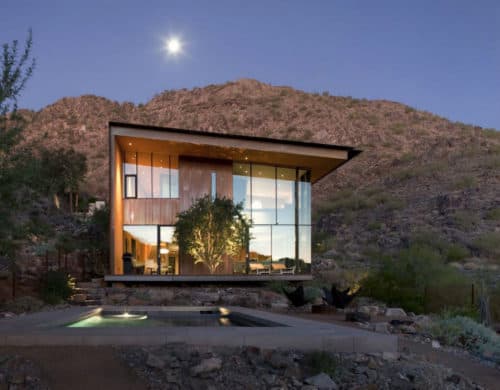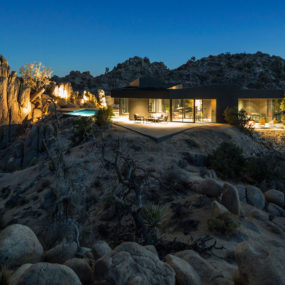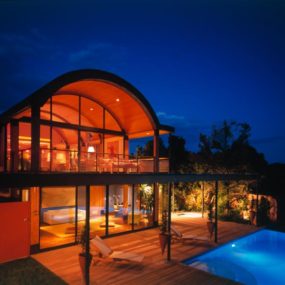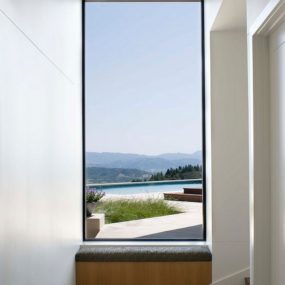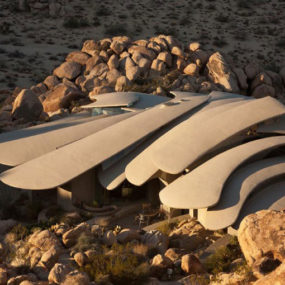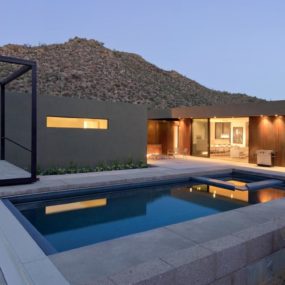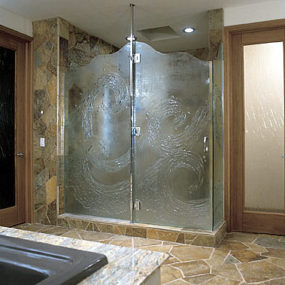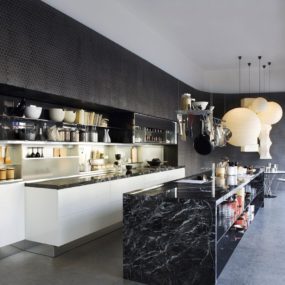
Designed by DesignBuildBLUFF, a non-profit organization, with a team of 8 University of Colorado students that had little to no construction experience, the Nakai House was built over the course of 80 days on a budget of $25,000. The home was built for a Navajo woman who is an avid collector of books, memorabilia, mementos, etc. and it was important to her to have a place to display her collections, as each piece represents a part of who she is. The client brief also contained a request for a non-traditional bedroom, preferring to have a space that represented “an enfolding womb” as well as a place of singular importance for the fireplace since it is an integral part of the Navajo culture. The final design is this incredible 50′ long bookshelf that stretches the length of the home, transforming the interior into a diverse exhibition space, both from the wall of shelving, and from the views beyond the windows.
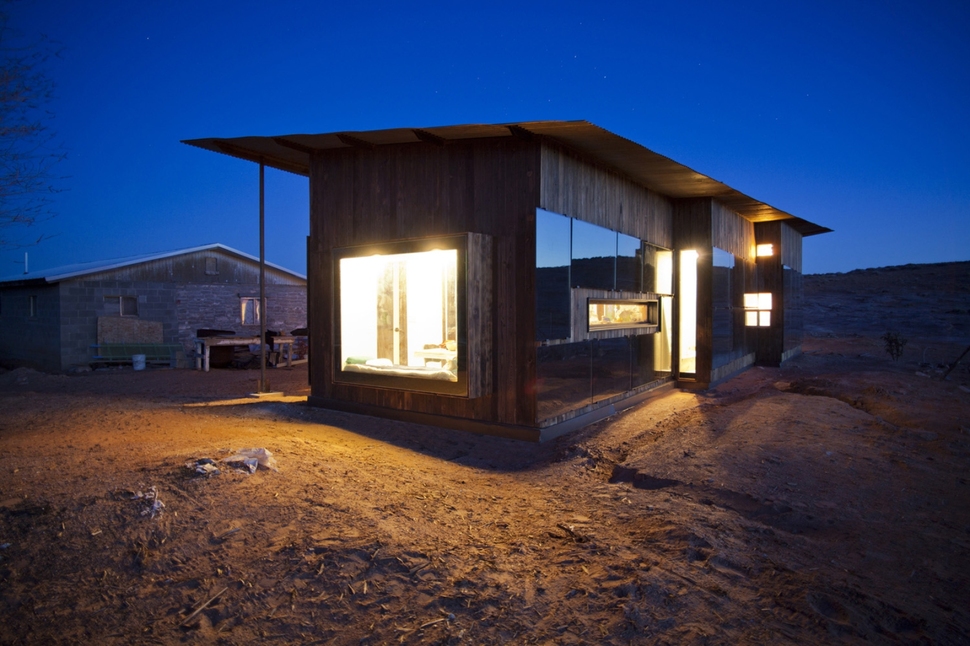
The location of the home was partially determined by the pre-existence of three existing structures and one singular tree, the building was located to create an outdoor communal courtyard that opens to the south, allowing the cool summer breezes to pass through while at the same time using the volume of the building to shield the courtyard from the frigid western winds in the winter.
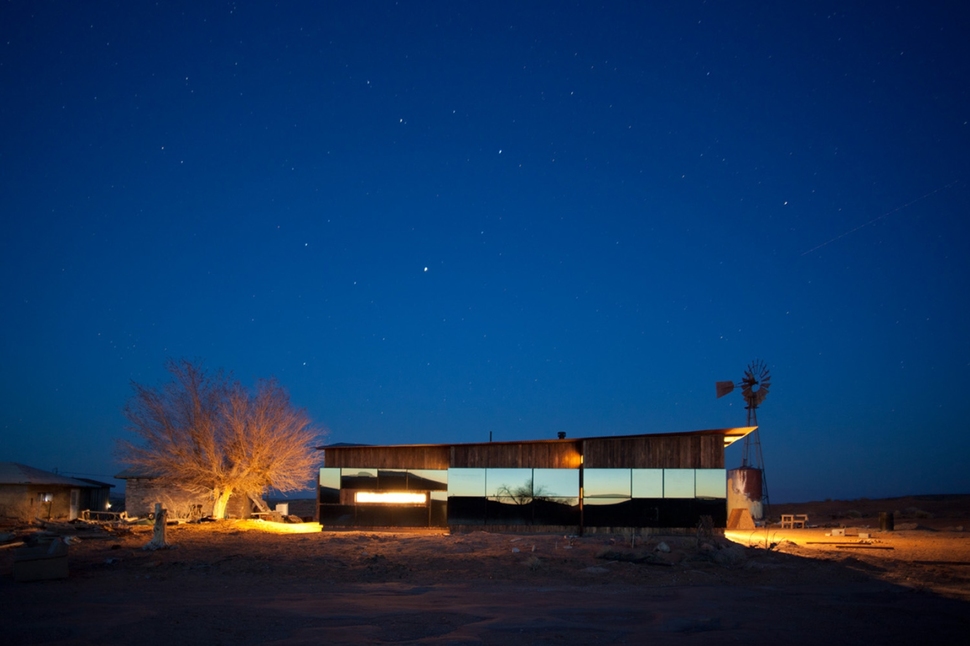
The orientation of the home is in direct response to the extremities of the desert climate. The buildings large south opening offers porosity to the east while the detailing of doorstops allows for cross ventilation. The house is clad in reclaimed spandrel glass, which is detailed to hang 2″ proud of the exterior walls to keep the harsh sun, and frigid winter winds from coming in direct contact with the walls of the home. This keeps the interior zone cool and quiet in the summer, and warm in the winter.
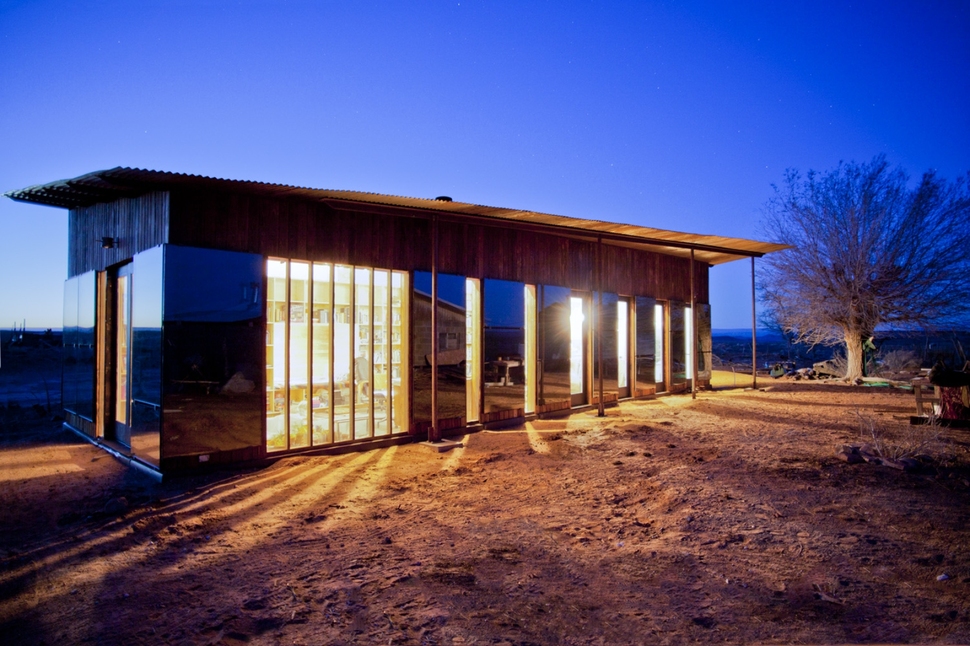
The deciduous tree creates a place of shade in the summer, while in the winter the leafless limbs allows the sun to continue through.

The entry to the home is located on the south end and the soft sloping roof extends into a protective overhang, creating a moment of shelter when entering or exiting. A singular outdoor sconce lights the way.
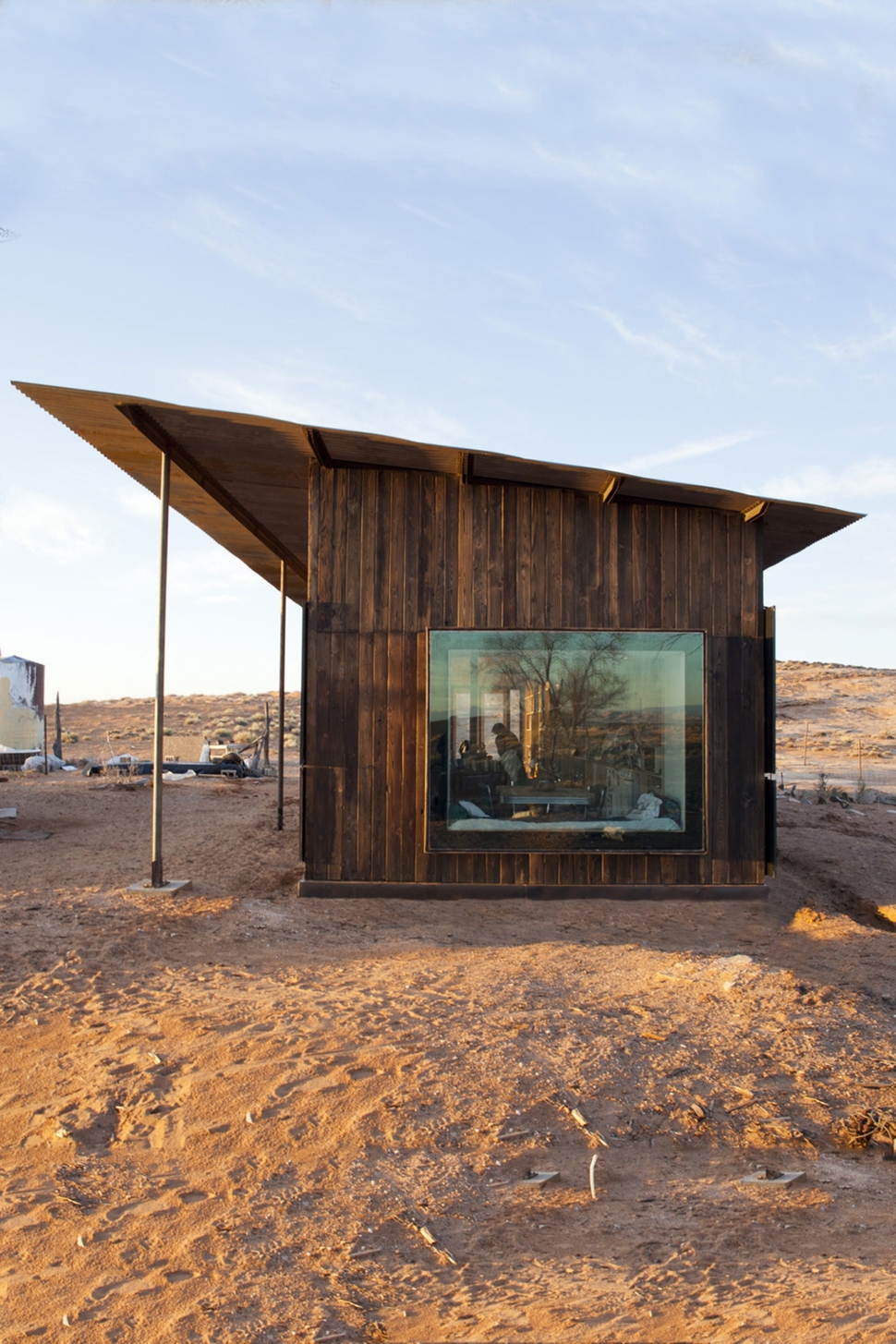
The north end of the home features a large picture window with a window seat to enjoy the views. The roofs overhang shades whomever is reclining there.
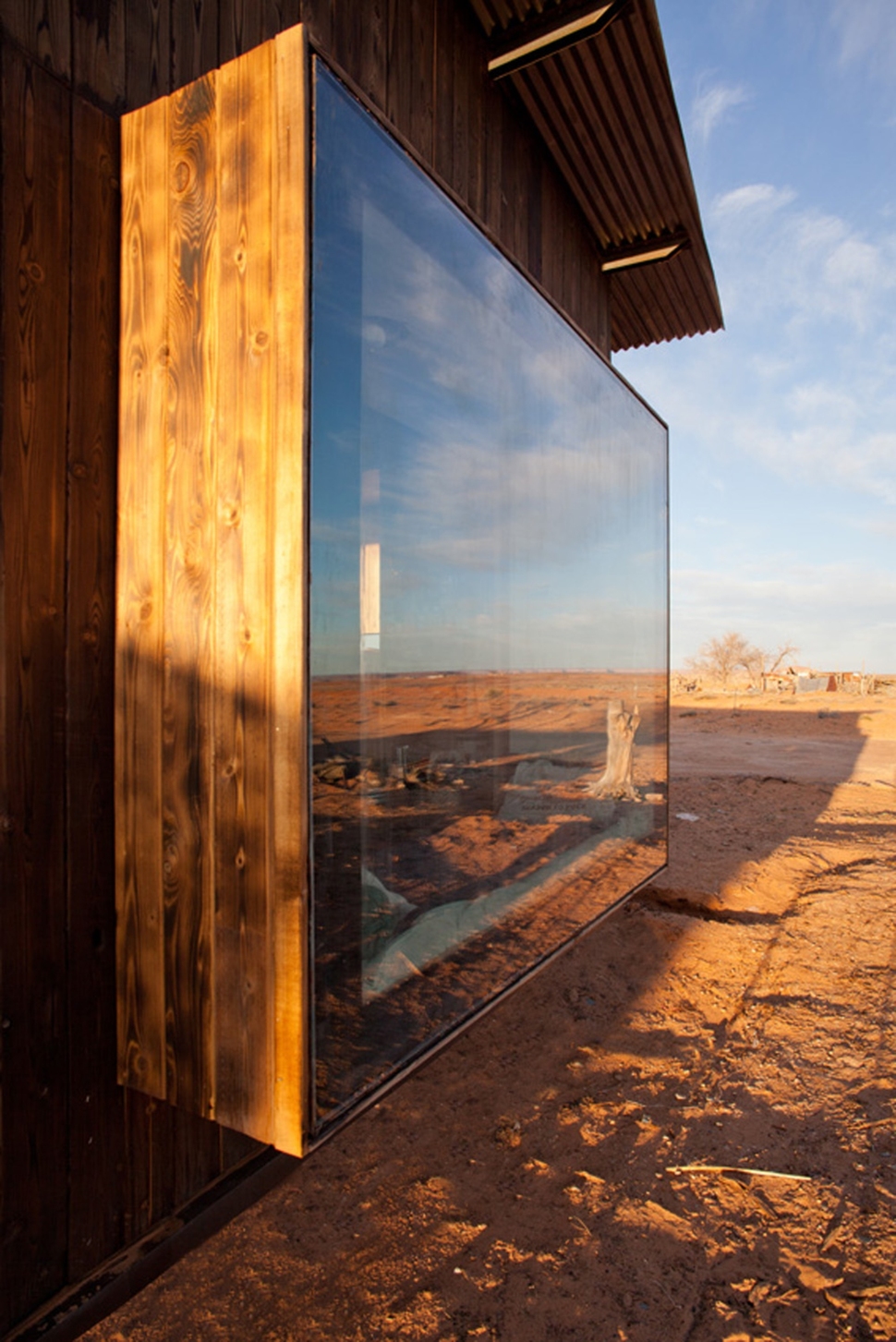
The window seat is created by a 24″ bump out in the wall.

The east side of the home is also clad in glass. Here, the overhang is maximized by the use of 4 steel columns set into concrete footings.
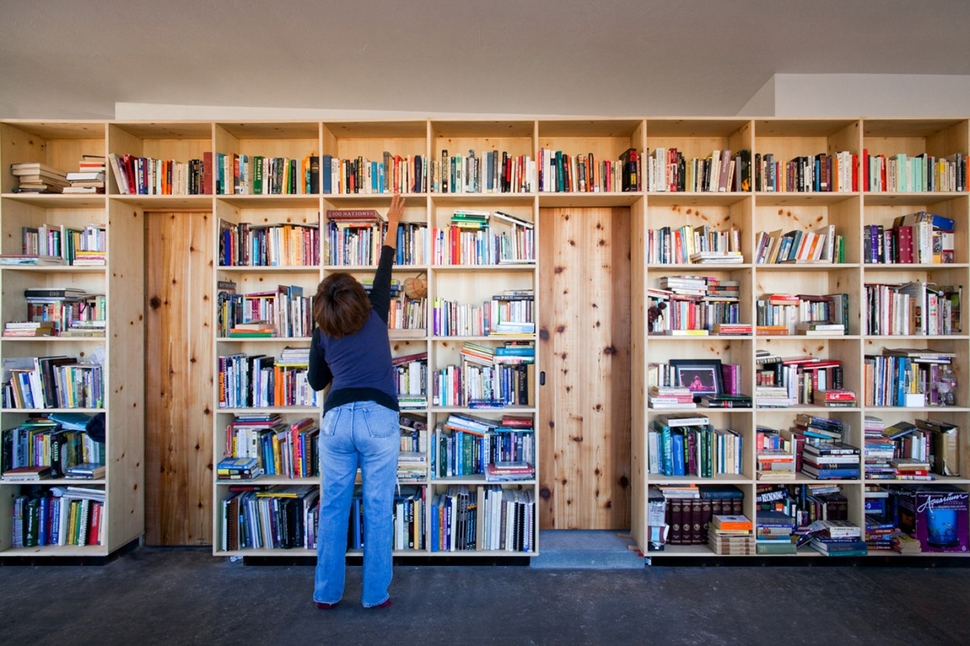
On the interior, the wall of shelving is both a showcase of books and mementos and a separation between the public and private zones. Here two recessed niches are actually the doorways to the washroom areas.
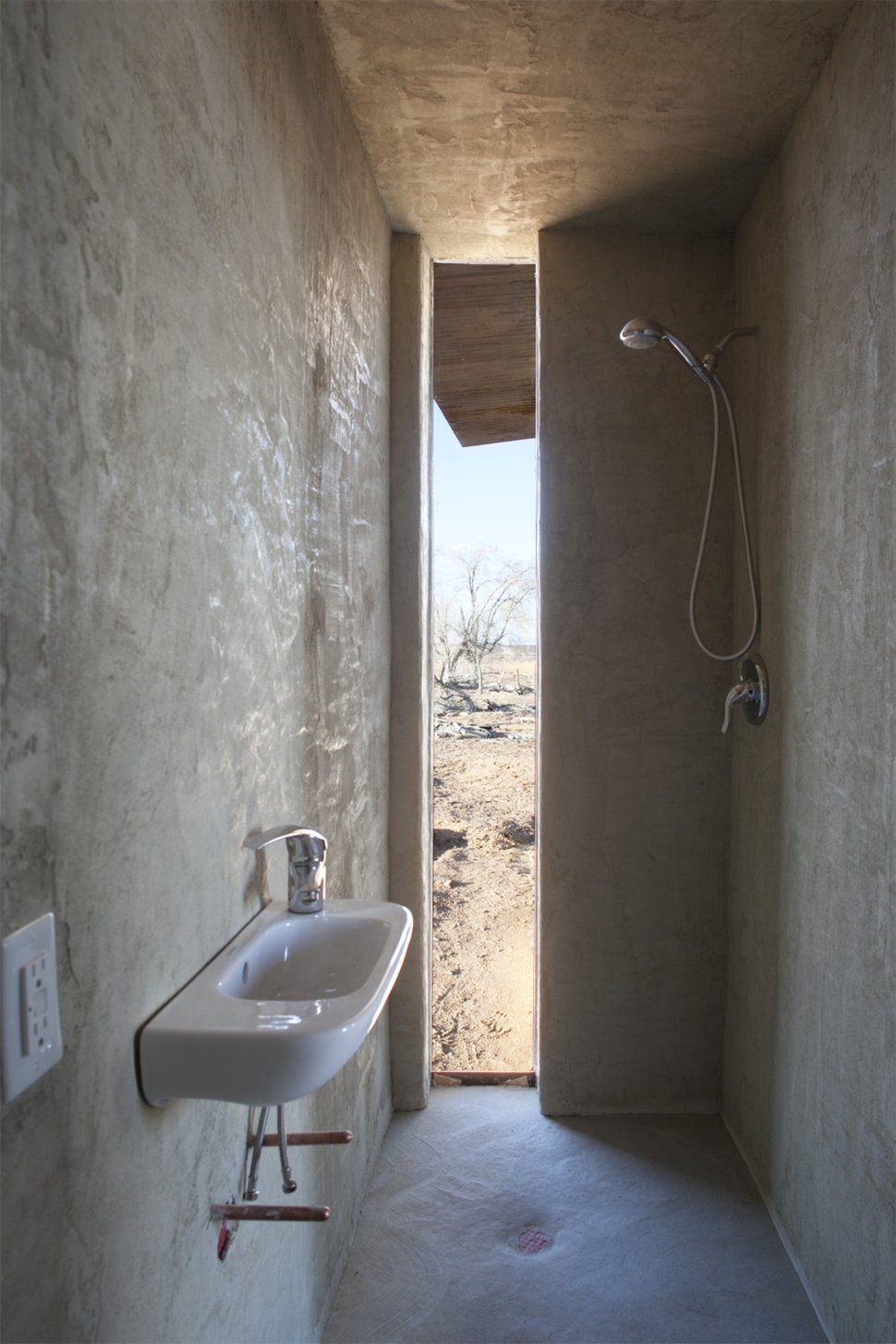
The main washroom is kept simple with a wall mounted shower tucked beside a privacy wall from the floor to ceiling window.
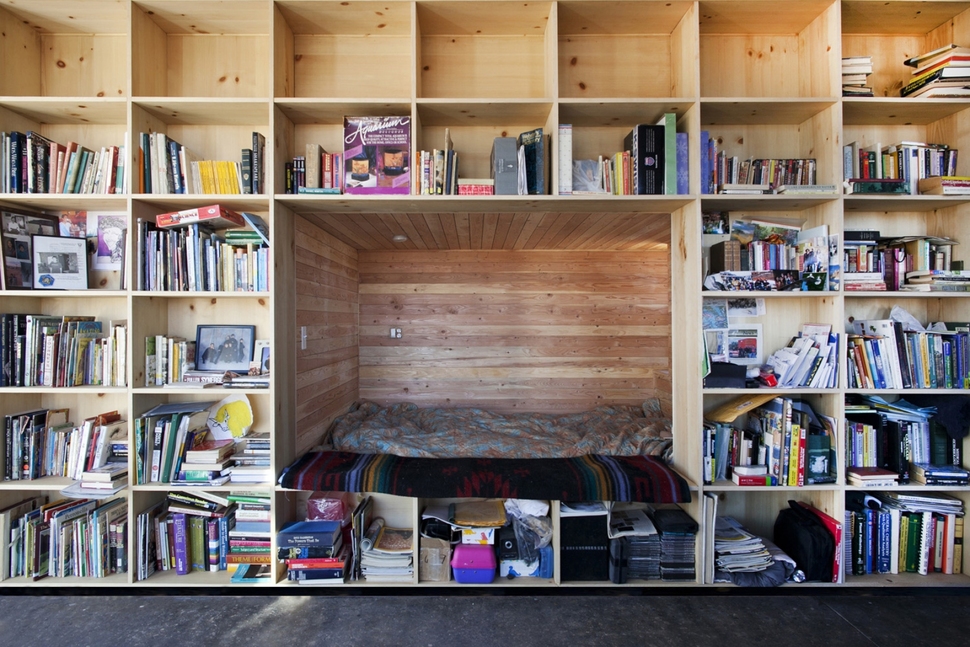
The client’s bedroom is designed to be centrally located within the wall of her collections. Referred to as her enfolding womb, the idea is that the collections quietly envelope her as she rests. The niche is deceptively large and bright as it tucks in behind the shelving, hiding a window view of the surrounding landscape.
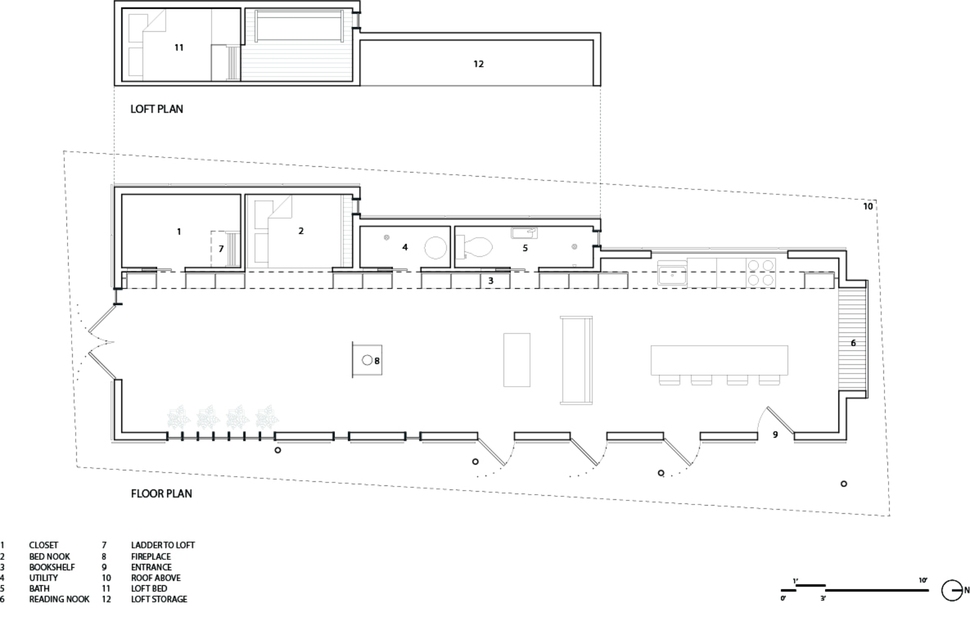
With a small 745sqft footprint the home increases its usable area with the addition of storage lofts, and of course, the bookshelf itself. The addition of the vertical spaces creates an additional 355sqft of usable space. As per the client’s request, there are no true bedrooms in the house, yet there are two defined sleeping zones, one in the bookshelf and one in the loft. There is also the window seat if need be. The stepping of the floor plan allows for the desert vistas and views to the mountains several miles north to permeate the interior volume for a true sense of outdoor connection.

The height of the undulating roof – and therefore ceiling line, creates a natural division of the three zones within the home.
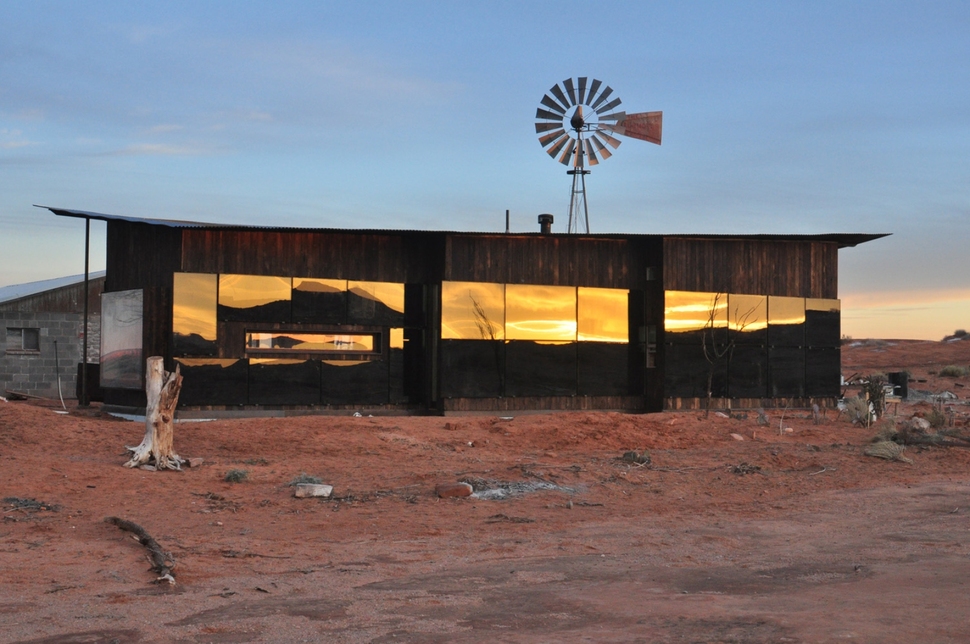
The reflective quality of the windows keeps the home wrapped in privacy, but privacy is also a factor of the location.
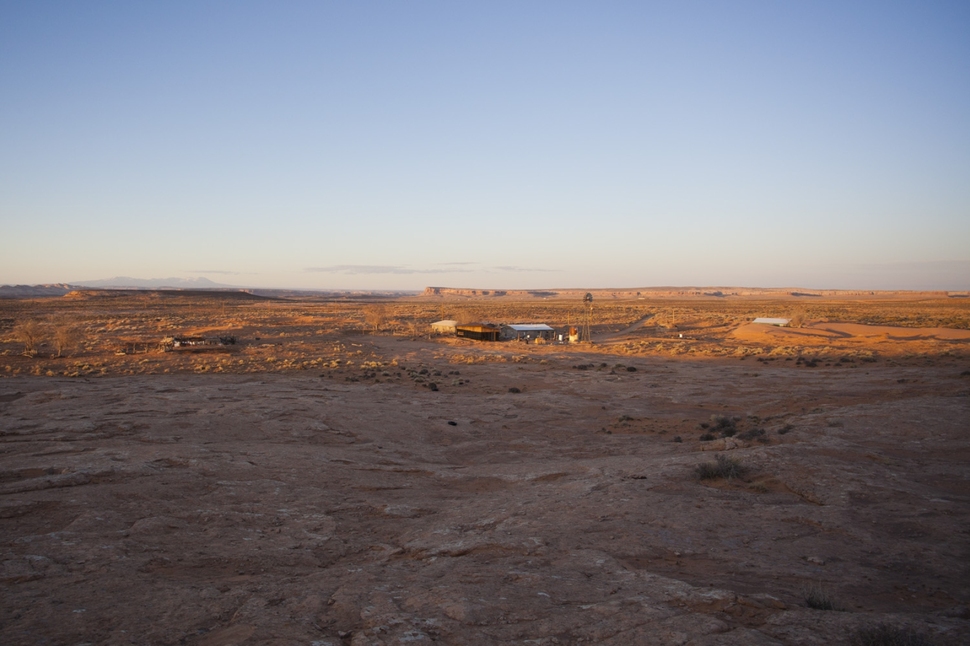
The home is, after all, surrounded by uninterrupted desert landscape.
DesignBuildBLUFF
